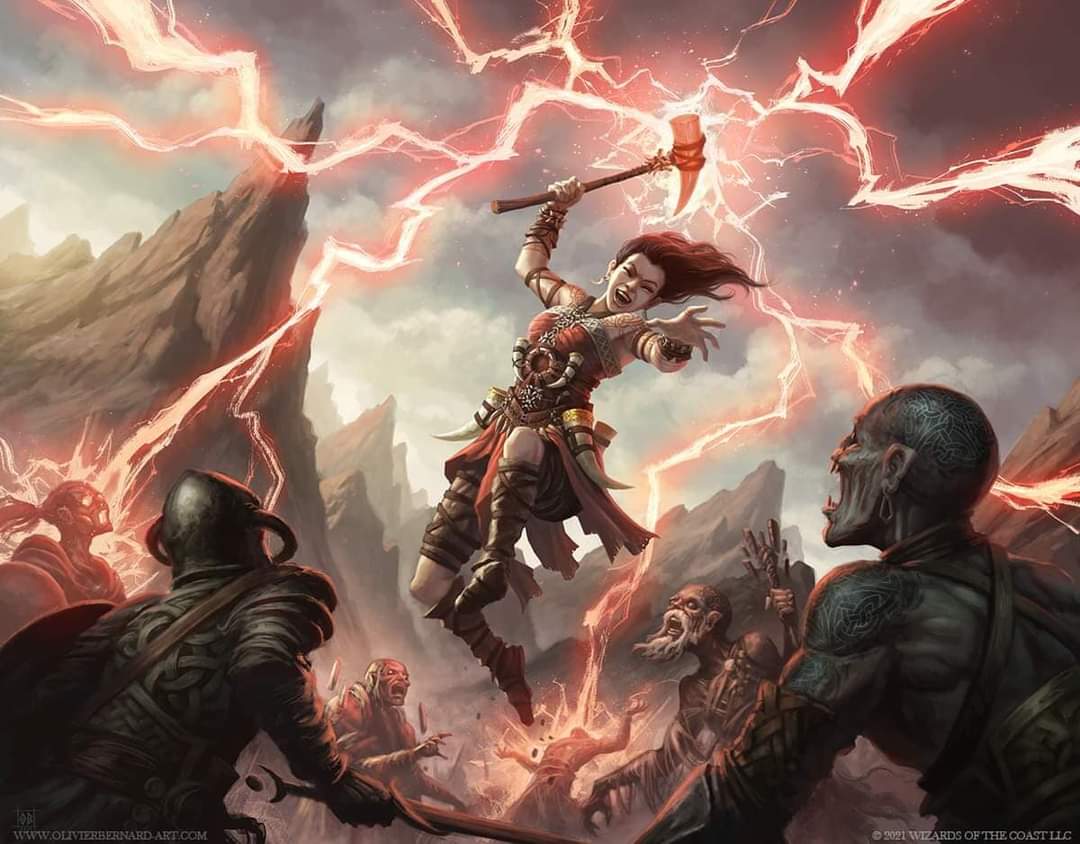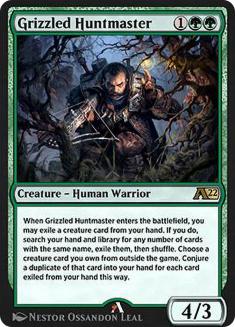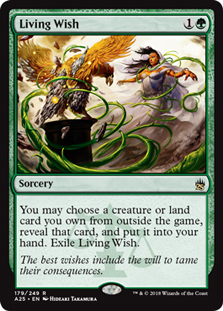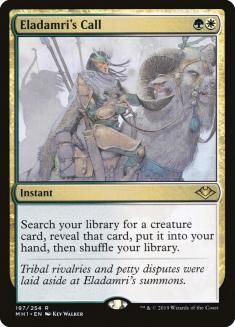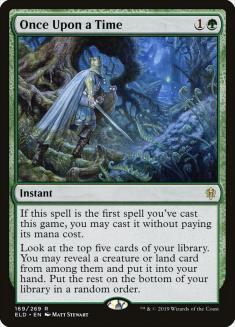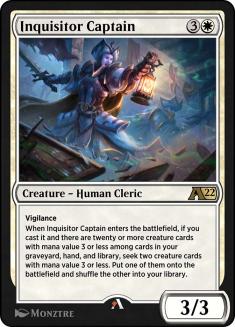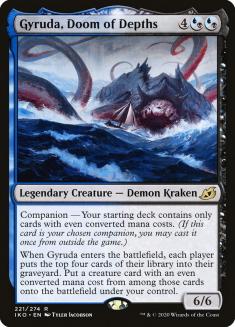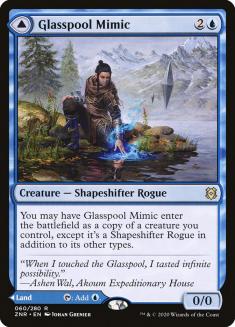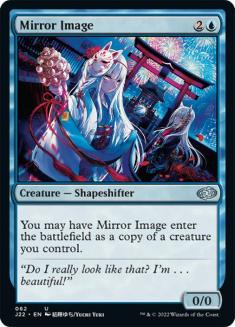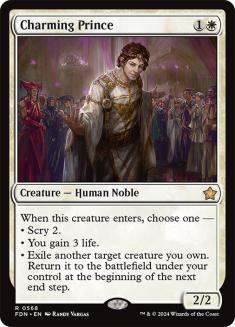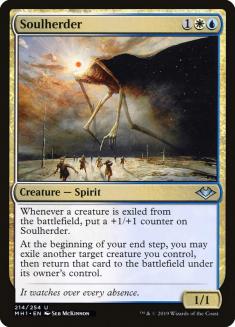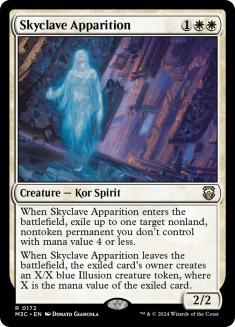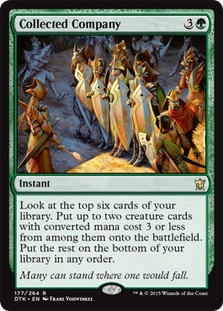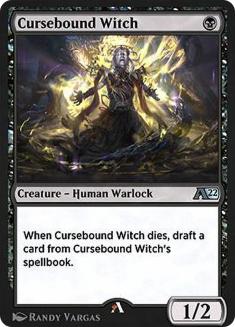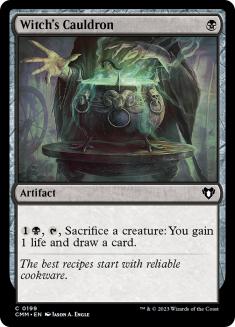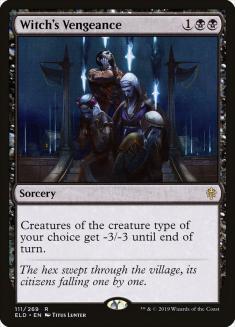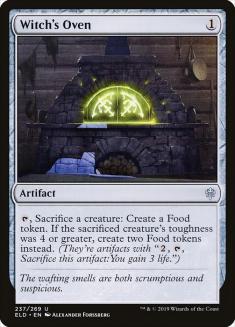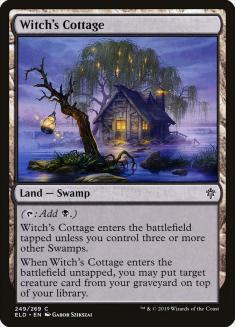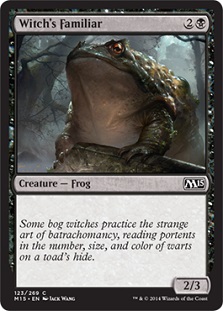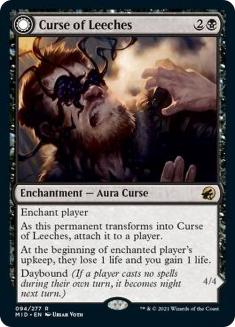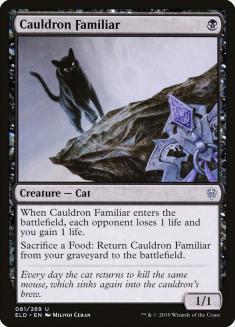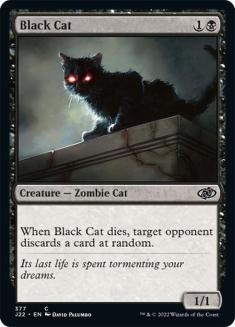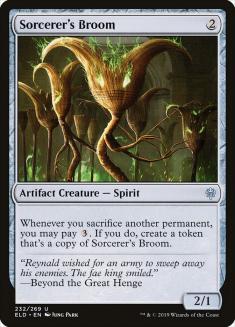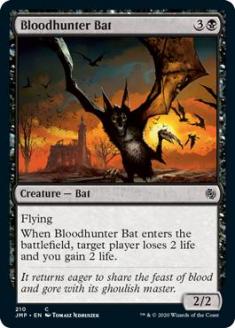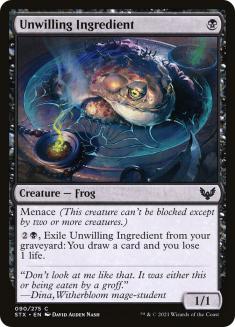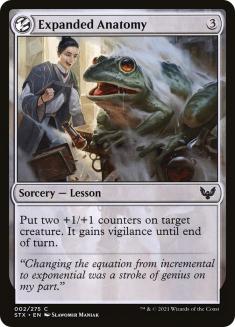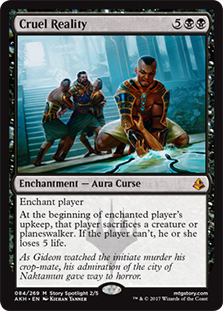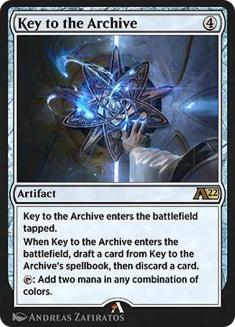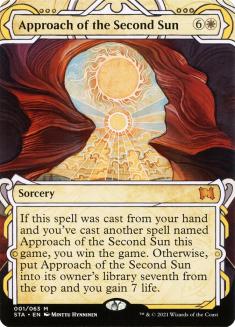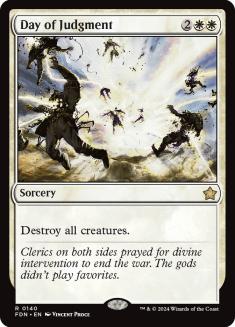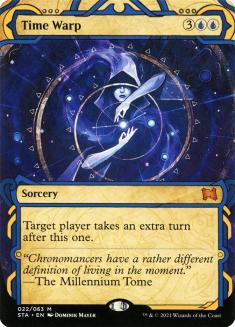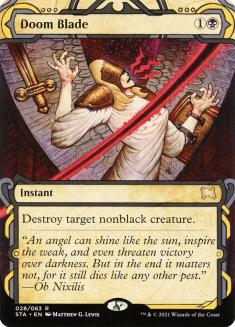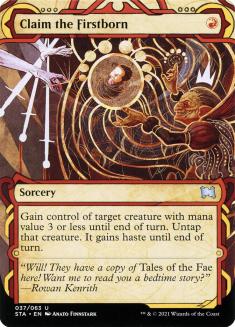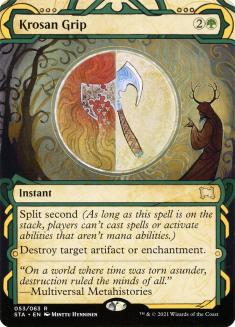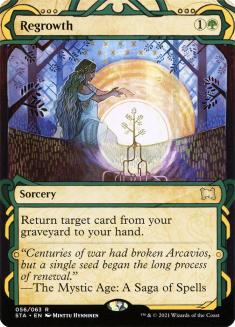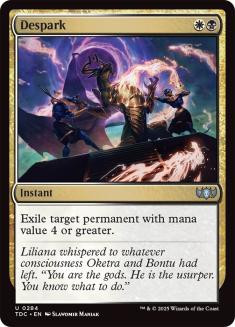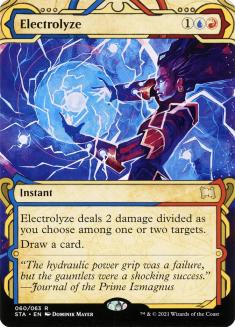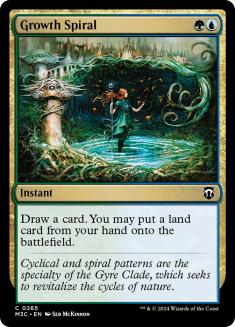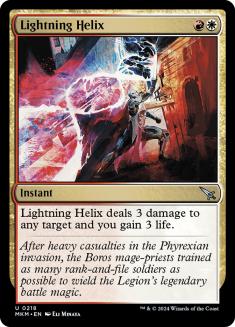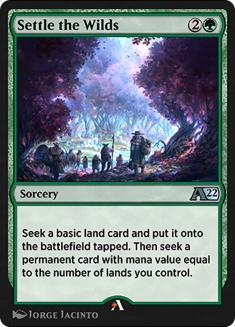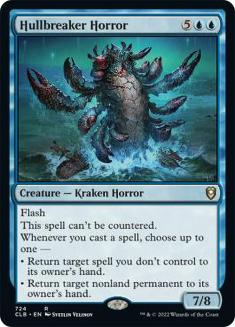The announcement of Alchemy earned mixed reviews from a concerned but mostly confused player base. Embracing the possibilities of digital Magic is an exciting step but this first batch of cards raises questions and eyebrows. Some of these questions are existential; will anyone care about traditional Standard in a year and what does it mean if Alchemy supplants it entirely?
Others are just strange…
This whole weekly column thing relies on a literate audience and the Twitter reaction to this card has me pondering a career change. I’m not saying it’s easy — I did a double take and had to reread it to parse it properly — but it’s not that hard. Reading the card does still explain the card.
If it takes you four tries to get it right, that’s a ‘you’ problem — but if there are enough of you, it’s a real problem. These reactions are common enough that you can’t just blame this on a few lazy readers. Running these new designs past less engaged players instantly raises some red flags (and must have done so internally as well).
This complexity may be worth it if the design goal is worth chasing and couldn’t be done any other way, but it’s easy to imagine alternatives. The base case of ‘swap a creature in your hand with one from your sideboard’ is clean and simple, keeping the most important and common use of the card, but is dangerously close to a printable paper Magic card for this flagship digital release.
‘All copies of a creature in your hand and library become copies of a chosen creature from your sideboard [in the same zones]’ preserves the ability to get rid of dead cards from your library in a more visible way (you can now identify its effect when you draw the replacement, which is hopefully still an upgrade). The actual implementation is a half-measure that’s more complicated in return for an effect that a player can never fully appreciate, as they’re merely avoiding an outcome rather than encountering a different one.
Still, the real version is easy to explain informally: ‘Exile a creature from your hand, replace it with a creature from your sideboard, and you can remove the other copies from your deck.’ The problem is that Magic’s precise but verbose language doesn’t allow this simplicity. Even my basic ‘swap X for Y’ example becomes this clunky mess:
You can imagine how a rival digital card game that doesn’t have the legacy and baggage of Magic’s rules engine could frame this much more simply (and legibly, on a tiny rectangle on a player’s phone). This remains a serious problem even as the obligation for online Magic to mirror its paper counterpart is lifted.
All of this skips over the fact that Grizzled Huntmaster is a fantastic card that’s sure to make an impact in Historic.
The Wish cycle from Judgment is still a unique and iconic take on tutor effects after twenty years and offers different trade-offs from direct tutors like Eladamri’s Call or the probabilistic ‘look at the Top X cards…’ effects preferred today. If your deck is based around a specific creature, you have less consistent access via Living Wish or Grizzled Huntmaster as one copy has to be relegated to the sideboard, leaving you with seven total copies (versus eight with a card like Eladamri’s Call) and taking up a valuable sideboard slot. However, if you need a card that’s generally undesirable but great in this situation, Wish gives you access to that pre-sideboard without cluttering up your maindeck with a mostly dead draw.
As a format gets larger with a wider range of decks that demand immediate and narrow answers, Huntmaster’s approach to that tradeoff becomes more appealing. In Standard/Alchemy, there’s no one creature that shuts down Mono-White Aggro❄ or is uniquely strong against Izzet Epiphany; the best you can do is find the right threat to keep curving out or win a fight along a familiar axis (a Mono-Green Aggro❄ deck with Grizzled Huntmaster might have a Tovolar’s Huntmaster or Avabruck Caretaker in the sideboard for the late-game). By contrast, Modern is full of linear decks completely disabled by a single card — you see some Golgari Yawgmoth lists splashing a Magus of the Moon for Chord of Calling and Eldritch Evolution to find against Amulet Titan and Mono-Green Tron, for example.
Historic is somewhere in between. There are few pure combo decks in the format and a lot of combo-control decks that have the time and resources to remove the creature you found to hose them. The exceptions are important — any creature-heavy Selesnya deck needs and wants Yasharn, Implacable Earth against Golgari Food or Jund Sacrifice — but you will more often want to dig up broad answers like Skyclave Apparition.
This effect coming with a decently large creature is crucial too. You aren’t taking the whole turn off to set up your next play, and being a creature in the first place lets it work with similar cards. If your creature combo deck has an all-important three-drop, your Collected Company or Inquisitor Captain can find it directly but could also find Huntmaster to grab the sideboard copy.
I’m interested in Grizzled Huntmaster when both of these conditions are met. It adds a needed redundancy to my own plan and I expect to face decks where finding a specific creature is a good form of counterplay. I’m excited to pair it with one of the most eye-catching creatures in this set:
Creatures (35)
- 4 Llanowar Elves
- 4 Wall of Blossoms
- 1 Mirror Image
- 4 Soulherder
- 4 Charming Prince
- 3 Skyclave Apparition
- 4 Glasspool Mimic
- 4 Prosperous Innkeeper
- 3 Inquisitor Captain
- 4 Grizzled Huntmaster
Lands (21)
Spells (4)

Inquisitor Captain will be a lot of things to a lot of people. To me, it’s a chance to relive the play patterns that made Gyruda, Doom of Depths the scariest companion in the earliest days of Ikoria. With a deck full of Clone effects like Spark Double or blink effects like Charming Prince, you could chain together Gyruda triggers until you either win on the spot with something like Thassa’s Oracle or Dragonlord Kolaghan or simply generate an unbeatable battlefield presence.
The expected output of Inquisitor Captain is unsurprisingly worse and you don’t have guaranteed access to it as a companion, but Captain is much cheaper with a less daunting deckbuilding restriction.
The Historic card pool lacks the most appealing versions of these effects, like Phantasmal Image or Flickerwisp, but we have enough good ones to make this worth chasing. Glasspool Mimic, in particular, lets you pad your creature count and Captain enabler count without making sacrifices elsewhere.
If Captain is just a four-drop that makes a few more Captains and something else, that’s impressive but not enough to lock up the game against well-tuned Historic decks that build a formidable battlefield presence themselves or ignore yours entirely. Skyclave Apparition (and Deputy of Detention or Knight of Autumn in the sideboard) will let you work interaction into these chains. Grizzled Huntmaster can find Apparition; a blink effect like Thassa, Deep-Dwelling to spin the wheel again next turn; or an all-important hate card.
A more obvious use of Inquisitor Captain is as a replacement (or additional redundancy) for Collected Company. This offers white creature decks access to a roughly similar effect without splashing green just for one card. Maybe Orzhov Humans is worth a look now instead of Selesnya, or the non-combo versions of the lifegain decks can stay mono-white, but popular versions of those decks are might be in the market for both:
Creatures (33)
- 4 Thalia, Guardian of Thraben
- 1 Thraben Inspector
- 4 Thalia's Lieutenant
- 4 Ranger-Captain of Eos
- 1 Giant Killer
- 4 Luminarch Aspirant
- 4 Esper Sentinel
- 3 Brutal Cathar
- 3 Adeline, Resplendent Cathar
- 3 Hamlet Vanguard
- 2 Ollenbock Escort
Lands (23)
Spells (4)

Creatures (29)
- 4 Soul Warden
- 3 Ranger-Captain of Eos
- 4 Heliod, Sun-Crowned
- 1 Selfless Savior
- 2 Skyclave Apparition
- 4 Scurry Oak
- 4 Trelasarra, Moon Dancer
- 3 Lunarch Veteran
- 4 Voice of the Blessed
Lands (24)
Spells (7)

Collected Company necessarily competes with other spells that look for creatures. If you could play as many copies of Company as you like, there would be steep diminishing returns as each additional copy is one less slot for a cheap creature. A deck with four copies each of Collected Company and Inquisitor Captain has little room for anything else that isn’t a creature that costs three or less (even with modal DFCs like Glasspool Mimic or Kazandu Mammoth boosting your creature count).
Company and Captain appear to push you in the same direction — if your Company deck couldn’t meet Captain’s condition, it didn’t have enough hits in the first place — but you run into some problems on the margins. Every creature you add reduces the fail rate of Collected Company but dilutes your creature pool for Inquisitor Captain. A likely offender here is Llanowar Elves, which feels important once you have eight high-impact four-drops in your deck and is at least a consolation prize if you have no other choices for Company but is effectively an extra miss for Captain. In one sense, Captain offers you more deckbuilding freedom, as it can never miss entirely and you always get at least the 3/3 with vigilance and something else; there’s no pressure to pad your deck with weaker creatures just to hedge against this worst-case scenario.
Captain’s strength depends on how valuable that 3/3 is for you and how much you care about specific creatures or combinations of creatures. In Selesnya Humans, a guaranteed pair of Humans (and pair of Thalia’s Lieutenant triggers or creatures to buff with Lieutenant) goes a long way regardless of what that second creature is, and Captain’s body makes that random outcome more enticing. On an empty battlefield, a Hamlet Vanguard found with Captain will still be a 3/3. Your goal is to add pressure to the battlefield and all of your creatures work towards that goal — at a certain point, it doesn’t matter much if that freebie is a Hamlet Vanguard or Adeline, Resplendent Cathar — so you only care about specifics if you need a disruptive creature like Thalia, Guardian of Thraben or Ranger-Captain of Eos.
In Selesnya Heliod, Captain means multiple triggers for your Soul Wardens (and thus another set of triggers for your Pridemates or Heliod), but this is a replaceable effect and not one you want to pay four mana for — you’re much more concerned about the general ‘A + B’ dynamic of Warden + Pridemate or specific combos like Heliod, Sun-Crowned + Scurry Oak. Company can hit both pieces at once and adding another copy of one piece aids the other; an extra Warden makes a Pridemate much stronger and vice versa. Selesnya Heliod is the perfect model of a deck that much prefers Company over Captain. I don’t think either deck can support a double-green card like Grizzled Huntmaster with their heavy focus on white unless the fixing improves, but a lot of these principles would apply to that card too.
This ‘riggable randomness’ is everywhere in the set and shows up in various forms:
And, of course, its spellbook:
The Food and Sacrifice decks that have consistently succeeded in Historic often have additional one-drops that offer a benefit when sacrificed. You know you want Cauldron Familiar and Witch’s Oven, but you need to make up the numbers with stuff like Shambling Ghast. Cursebound Witch gets you more copies of Familiar and Oven or other appealing tools… sometimes?
The odds of hitting one of Familiar or Oven aren’t that bad, but you can’t rely on hitting one of these in particular and the first copy of each is much more important than the second copy of either. I’m not convinced your average return on this is better than something like Eyetwitch unless the rest of the spellbook is useful.
The verdict is mixed there. Witch’s Vengeance is sometimes a fantastic card that I’d want actual copies of in my sideboard anyway but often totally blank. If you just need more sacrifice fodder, Unwilling Ingredient is a fine but slow option, and Witch’s Cauldron is a passable second-tier sacrifice outlet. I can imagine wanting to ramp into Cruel Reality with Phyrexian Tower in a very long game, I suppose?
This form of randomness can be exciting — and you certainly will remember the times where you hit the Bloodhunter Bat at the perfect moment to steal the game — but from a competitive perspective you’re looking to maximize your odds of locking in a safe outcome. I don’t know if Cursebound Witch passes that test.
Key to the Archive absolutely does and may be the best card in Alchemy: Innistrad.
This spellbook is wall-to-wall bangers and a fitting homage to the Mystical Archive.
Some are situational — Claim the Firstborn is only good against some decks and a shell that wants Key to the Archive probably won’t have sacrifice outlets — but every single one of these cards was a Constructed staple in its time. Even the worst permutation of three cards still leaves you with something reasonable and that ‘dud’ can just be the card you discard to Key’s trigger.
If you want a generic class of effect, you’re very likely to get that from Key. If a creature dies to Doom Blade but also Lightning Helix or Lightning Bolt, your odds are good. Key’s spellbook also includes unique effects that you can’t base your gameplan around drafting but will have a dramatic impact on games. Approach of the Second Sun is a nigh-unbeatable end-game with the right support, while Time Warp has earned its spot on the Historic Banned List.
Creatures (1)
Planeswalkers (2)
Lands (27)
Spells (30)

On top of this, Key is one of the better Hedron Archive variants we’ve seen in a while. Control decks in Historic have a lot of ways to use extra mana as well as demanding colour requirements; Key addresses both of those issues while offering up an additional mana sink. The Magma Opus tricks with Mizzix’s Mastery and Torrential Gearhulk have fallen out of favour recently, but Key is perfect there too. Discarding Opus lets you cast Key on Turn 3, Key ramps you towards a hard-cast Opus or overloading Mizzix’s Mastery, and the Treasure tokens from Opus or Prismari Command let you cast the off-colour spellbook hits like Demonic Tutor if you don’t get to untap with Key.
Creatures (15)
Planeswalkers (2)
Lands (16)
Spells (27)

How about this blast from the past, based on a shell from streamer and combo fanatic Mystmin? Tome of the Infinite was an early preview of what was possible with the spellbook idea, allowing Paradox Engine to go infinite surprisingly easily. Key hits every right note here — a renewable mana source with Paradox Engine that gives you another spell to trigger Engine right away (as well as the specific colours of mana you need to keep chaining spells) and a backup plan when your convoluted combo doesn’t come together.
Alternatively, we can keep it simple with another promising ramp card from Alchemy: Innistrad.
Creatures (7)
Planeswalkers (5)
Lands (28)
Spells (20)

The classic problem of ramp decks is drawing too much ramp or too many payoffs. The ramp spells that address that problem have been highly dangerous across Constructed formats. Key to the Archive will prove that in its own way, but Settle the Wilds is another intriguing example. As long as you only have a single unique permanent at each of the higher spots on your curve, you can guarantee access to that card and the mana to cast it for the following turn. Settle and Key can work nicely together. Consider this curve:
- Turn 1: Arboreal Grazer
- Turn 2: Settle the Wilds, finding Key to the Archive
- Turn 3: Key to the Archive
By Turn 4 you have up to seven mana and hopefully at least one good thing to spend it on thanks to Key to the Archive.
Another common fail case of ramp decks is having your one payoff easily neutralized. Between Shark Typhoon; Hullbreaker Horror (as well as explicitly anti-control equivalents like Nezahal, Primal Tide); and creature-lands like Lair of the Hydra and Hall of Storm Giants, you aren’t nearly as scared of Archmage’s Charm and the like as the basic ramp formula would suggest.
The sudden injection of cards into a format is a game-changer for the artist formerly known as Standard but par for the course in Historic. What Alchemy: Innistrad represents – digital-only cards, ad hoc rebalancing, and a new package of unique cards with every set release – is a big deal for every format it touches, and Historic is no exception. This first pass has some highs and lows but is sure to make a mark in Historic, and the wider concept will keep a spotlight on the format in perpetuity.

